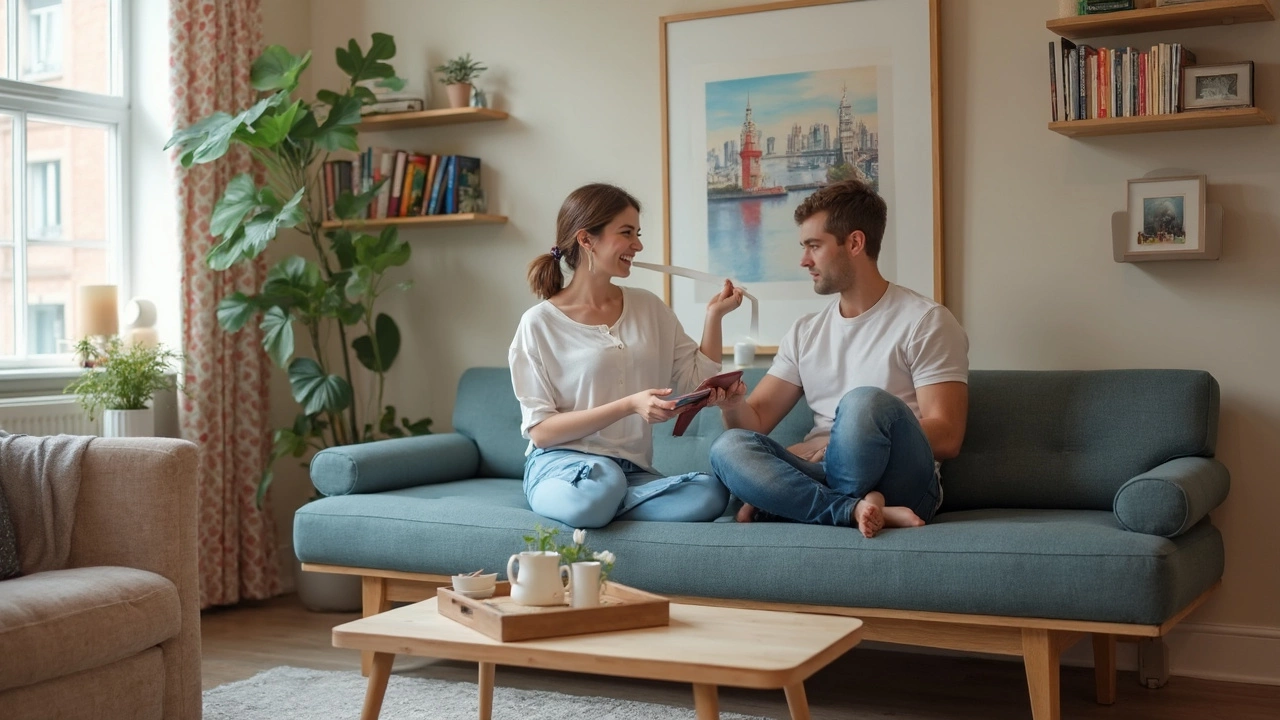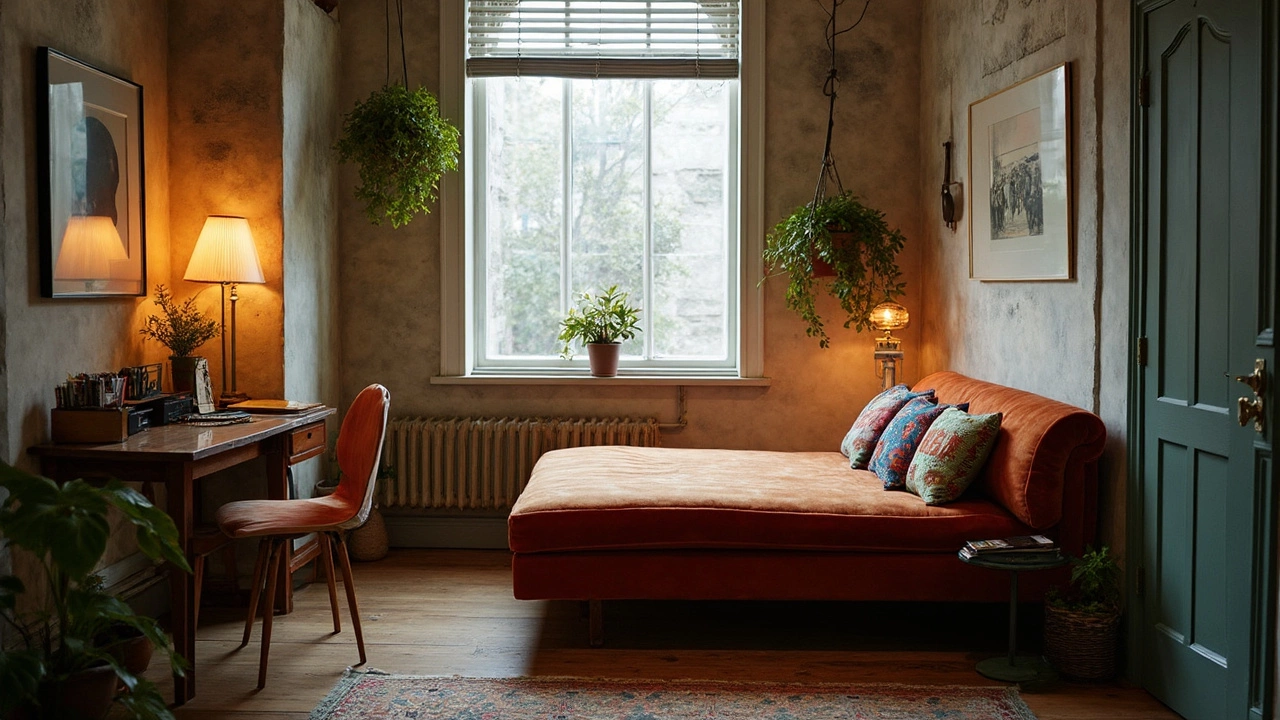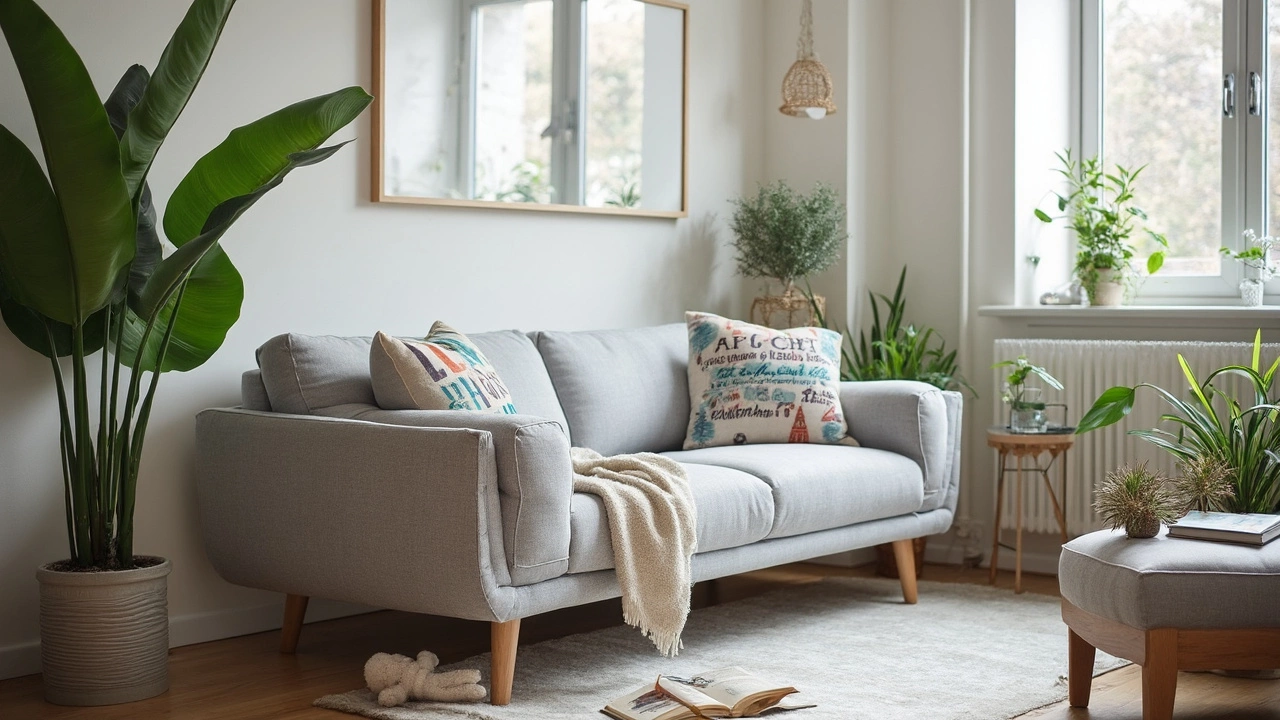Sofa beds are a lifesaver when you need seating and a sleeping spot but have zero extra space. But figuring out where to put one? That’s not as simple as it sounds. Stick it in the wrong spot and you’re tripping over it every morning. Choose the right place and suddenly you have room to breathe—even when guests show up last minute.
If you’re scratching your head looking at your tiny apartment or a surprisingly small living room, don’t stress. There’s always a way to work with what you’ve got. Moving a sofa bed isn’t fun, so save your back by planning ahead. I’ll break down the best spots to put a sofa bed and what you should look for, so you’re not left with awkward layouts or blocked doors.
- Thinking About Your Space
- Living Room Placement Secrets
- Guest Room and Multi-Use Spaces
- Small Apartments and Studio Hacks
- Must-Know Sofa Bed Tips
Thinking About Your Space
Slapping a sofa bed in just any corner doesn’t work. Before you even look at the color or fabric, you’ve got to look at your room’s layout and take some measurements. Pull out a tape measure—seriously, eyeballing it leads to mistakes. Most standard sofa beds are at least 72 inches long and can need up to 90 inches of depth when fully opened. That’s almost the length of a twin mattress taking over your living room.
The number one thing? Leave enough space so you can pull the bed out without bumping into other furniture—or worse, blocking the door. And don’t forget: you’ll need walking space around the open bed, or you’ll be stepping on your guests at midnight.
- Measure both the closed and open length of the sofa bed placement spot, and make sure the bed has at least 2-3 feet to spare for moving around.
- Think about what else needs to fit: side tables, lamps, or rugs? Can those stay where they are, or will you have to rearrange everything every time someone sleeps over?
- Check the doorways and hallways where the sofa bed will arrive. Some sofa beds aren’t made to fit narrow doors—getting stuck in the hallway is a true nightmare.
- Consider electrical outlets. If this spot is in use for guests, you probably want a plug nearby for phone chargers or a lamp.
Room size makes a huge difference. Here’s a quick look at average US room sizes and how a sofa bed fits:
| Room Type | Average Size (sq ft) | Fits Queen Sofa Bed? |
|---|---|---|
| Studio Apartment | 500 | Yes, with careful placement |
| Small Living Room | 200-300 | Yes, may need to move other furniture |
| Large Living Room | 400+ | Easy fit |
| Guest Room | 120-150 | Yes, but tight for other items |
Setting up the perfect spot means looking at how you use the room every day. If you’re flopping on the couch to watch TV, don’t block the view. If guests will be the main users, make sure they have some privacy and easy access to a bathroom. Plan ahead now and you’ll have a much easier life later—no climbing over furniture every morning.
Living Room Placement Secrets
Finding the best place to put a sofa bed in your living room feels a bit like solving a puzzle. Too close to the TV, and nobody can walk past when it’s open. Shoved up against a wall, and it doesn’t fit in with the rest of your furniture. Here’s how to get it right without driving yourself crazy.
Start by measuring both your sofa bed—fully opened—and your living room, including doorways and walkways. It’s shocking how many people forget about that second measurement. A queen-size sofa bed, when unfolded, often takes around 89 inches (about 7.5 feet) of length. Suddenly that cozy nook looks a whole lot smaller, right?
If your space is tight, float the sofa bed away from the wall. Put a slim console table or trunk behind it for storage. This gives a comfy lounge vibe and makes it easy to access when you need to pull it out. Placing the sofa bed opposite your main window or light source also keeps the room feeling bright and open, instead of boxed in.
Think about traffic flow too. You never want to block major walkways. Leave at least 30 inches of clearance in front so people can move around, and keep end tables light and easy to move. Avoid placing rugs that bunch up under the sofa bed—nobody likes tripping in the dark for a midnight snack.
- If you host guests often, aim to have a direct line to a bathroom without squeezing past furniture.
- Use nesting tables and stackable stools for flexible seating, so you can clear space quickly when the bed comes out.
- Try a corner placement if you’ve got a sectional-gap, especially in L-shaped living rooms. Just confirm both couches and beds can open without slamming into each other.
Here’s a handy cheat sheet for sizing and clearances:
| Type | Closed Width | Open Length | Minimum Clearance Needed |
|---|---|---|---|
| Full Size | 72"-80" | 85" | 30" front |
| Queen Size | 80"-90" | 89" | 30" front |
No matter your style or living room shape, the sofa bed placement will make or break comfort for daily life and guests. Taking time to measure and plan now saves a lot of headaches later.

Guest Room and Multi-Use Spaces
Turning the guest room into a multi-use spot is probably the most practical move for anyone juggling space. A sofa bed placement can make a guest room way more useful, especially when it’s mostly your work-from-home office, gaming zone, or even a laundry-folding headquarters for most of the year. Here’s how you can make it all work without driving yourself nuts.
Start by making the sofa bed the main furniture piece, not just something you shove in a corner. Place it so it works as regular seating on normal days—maybe against the longest wall, but not blocking windows or closets. This way, if you have guests, you only need to clear the space in front and pull it out.
If you stash a desk, exercise gear, or storage bins in the room, keep at least three feet of clear space in front of the sofa bed. When it’s time for sleep mode, you don’t want to move a mountain of stuff just to open the bed. Wall-mounted shelves or floating nightstands save floor space and give guests a spot for their phone or a cup of water.
Got a tiny guest room? Try swapping out a big dresser for a rolling storage cart that tucks into a closet—or under the sofa bed itself. Ottoman-style sofa beds give you bonus storage and can double as a coffee table when the bed isn’t in use.
- Check the door swing—don’t put your sofa bed where the room door can’t open fully once it’s unfolded.
- If you have a TV or want reading lights, go for plug-in options instead of hardwiring. You’ll have an easier time shifting the room layout if your needs change.
- Have a stack of fresh bedding and pillows ready. Use slim bins under the sofa bed for quick access.
When you think of your guest room as a flexible zone—office, gym, chill space—it pays off in the long run. You won’t feel like you gave up a whole room for guests you see a few times a year.
Small Apartments and Studio Hacks
In a tiny apartment or studio, every square foot should work extra hard. The good news is that some of the best sofa bed placement ideas are actually tailor-made for cramped spaces.
First, put your sofa bed against the longest wall. This keeps it out of the way during the day and turns it into a functional bed at night. No one wants to haul their morning coffee around an unfolded sofa bed every time they walk through the room.
If your space is more square than rectangular, go for a corner. L-shaped placement frees up the center for daily use. Even better, using a sofa bed as a makeshift room divider gives you a sleep zone and a living area—even if they're only a few steps apart.
Look for sofa beds with slim arms and backs, or even armless models. These save precious inches and make the whole place look less cramped. Some newer sofa beds open up without needing all that clearance behind or in front (think click-clack or pull-out designs), which is a game changer if you’re trying to stick one up against a wall or close to a window.
- If space gets tight when the bed unfolds, try floating furniture—like a small side table or floor lamp—that you can move out of the way easy.
- Invest in multipurpose furniture, like ottomans with storage or nesting tables, so you’re not tripping over clutter when the bed's out.
- Leave at least 28 inches of free space from the end of the unfolded bed to the next thing—otherwise, you'll have to jump over it to leave the room.
Studio apartments are notorious for feeling cramped. Try placing the sofa bed near a window for natural light, which makes even cramped spaces feel bigger. Sliding doors or curtains can create privacy for overnight guests without walls.
| Typical Sofa Bed Width (inches) | Open Bed Length (inches) | Minimum Room Length Needed (inches) |
|---|---|---|
| 70 | 85 | 113 |
| 80 | 90 | 120 |
It's important to measure your space and check the sofa bed’s full length when open. The table above gives you a good idea of room size versus actual bed size, so you won’t end up slamming into a wall or blocking the only door at 2 a.m.
Bottom line: in small spaces, smart placement plus the right style makes all the difference. You don’t need a giant living room—just a plan that fits your life.

Must-Know Sofa Bed Tips
If you want your sofa bed placement to actually work, there’s a bit more to think about than just sliding it into a corner and calling it a day. Here are some solid tips that’ll make your life way easier.
- Measure. Twice. You’d be surprised how many people forget to check the size of both the sofa bed and the space where it’s going—especially once the bed pulls out. Make sure there’s at least 24 inches of clear space in front, so when you fold it out, you can actually walk around it. If your space is tight, go for a loveseat-sized sofa bed.
- Test the mechanism before you buy. Some sofa beds glide open like butter, others need two people and a lot of muscle. If the pull-out or click-clack system is awkward, you’ll dread using it. Look for models that open and close without a fight.
- Cushion comfort is everything. A sofa bed with a thin, stiff mattress can leave your guests tossing and turning. Memory foam mattresses tend to be comfier and lighter than the old-school spring ones. If your model is uncomfortable, buy a foldable mattress topper and stash it nearby.
- Mind the floor type. Sofa beds can scratch hardwood and catch on thick rugs. Put down felt pads under the feet if you’ve got sensitive floors. On rugs, be ready to vacuum more often—those mechanisms can snag threads and leave fuzz behind.
- Don’t forget about storage. A storage-friendly sofa bed lets you tuck bedding inside so you don’t have to hunt for sheets at midnight. Ottoman-style and some sectional sofa beds come with built-in compartments for blankets and pillows.
Here’s a quick cheat sheet showing what features matter most, based on a 2024 buyer survey of over 350 sofa bed owners:
| Feature | Percentage Who Value This |
|---|---|
| Easy-to-open mechanism | 78% |
| Comfortable mattress | 82% |
| Bedding storage | 51% |
| Fits room size | 69% |
The right sofa bed lets you skip the stress and enjoy having company over. Take your time, pick features that matter to you, and your sofa bed won’t just be a backup—it’ll become a go-to spot in your home.


Write a comment